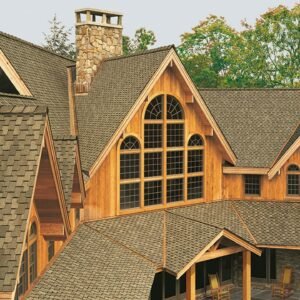Whether you live in East Hampton, Suffern or Chelsea, you should not compromise on the quality of your home siding when it comes to your home exterior. Your home siding is one of the definitive parts of your home’s exterior, and you don’t want to compromise on the protection of your home’s outer layer just because you want a particular style. In fact, it is possible to get a beautiful new siding for your home, whether it has cracks, chips, or fading. You can hire a pro siding contractor in East Hampton, New York to fix your home siding or you can choose a do-it-yourself project, using the tips found in this article.
SIDING REPLACEMENT NORTH FORK, LONG ISLAND NY

In terms of the details of a siding installation and replacement project Long Island NY, there are a few things you should know about before contacting a home improvement company. For example, did you know that in many cases, home repair contractors can perform the task of home siding installation and replacement, without any special training? That’s because most home repair companies offer some kind of guarantee on their work. Furthermore, many of the companies will be happy to give you a free quote for the total cost of the project, including labor costs. It may sound surprising, but often the cost of a roof repair is significantly less than the cost of a siding installation! The trick is to find a roofing contractor who offers these kinds of guarantees, and also has plenty of references that you can contact to learn about their experience.
BEFORE HIRING A CONTRACTOR

Before hiring a contractor to repair your siding, you should take the time to thoroughly check around for prices, references, and more. In fact, if you’re at all unsure of whether you want to purchase new or used materials for your repair job, you should certainly skip the process all together. Keep in mind that sometimes you will be able to repair the damage to your existing siding using materials that may already be in your home. But if your existing siding is severely damaged, you may have to purchase or rent new materials for your repair job. Also keep in mind that you should never hire a contractor or repair person without first inspecting the inside of your home for damage!
DAMAGE TO OTHER AREAS

Another thing that you should do before hiring a contractor to do your home siding installation and replacement is to get an inspection of the entire property. This way, you can prevent another disaster from happening. For instance, if there is obvious damage to the attic due to hail damage, but no such damage to the other portions of the house, don’t simply repair the attic and hope that it stays nice and dry. Hire a professional to look at the rest of your property and to see if there is anything else that could have been done to prevent the damage. While it’s true that you may be able to repair some areas of damage yourself, hiring a professional home inspector is a good idea just to be on the safe side.
SIDING MATERIALS COMPARISONS

Once you’ve done an inspection of your home and found everything to be in order, you’re ready to start repairing your home. In this case, you’ll want to replace the damaged parts of the wood siding and the damaged areas of the vinyl siding with new materials. In general, the best material for home siding installation and replacement projects is vinyl siding because it’s so durable and it resists damage far better than wood does. And although vinyl siding can be somewhat expensive, it’s far less expensive than wood siding – which can be very expensive indeed!
Once the repairs have been completed and the siding replaced, the only thing left to do is to finish installing the trim around the exterior of the home. Finishing the installation of the new replacement part can often be all that’s needed to get rid of that unsightly seam that ran along the edge of your home. The best advice that can be given for finishing the installation of the new replacement part is to use a drywall knife with a diamond-tipped tip. This will cut the seam, allowing for the replacement part to be installed flush against the home’s exterior walls. If your home hasn’t yet been built, or if the home was recently built, it’s usually best to install the new vinyl siding first, since older vinyl siding (and even newer vinyl siding) can have gaps in the corners that can cause water damage to your home. But if you’ve already got a house built, then finishing the installation of the new replacement siding should be a relatively painless process.